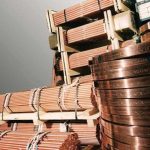Analysis of the lightning risk
Analysis of the lightning risk takes numerous factors into consideration. This article will shed the light on one of factors – protection of the structures and its five most important aspects: lightning conductors, electrogeometric model, capture surface areas, downconductors and of course earthing system.

The protection of installations and the electrical or electronic equipment is not considered here, only the most important aspects of external protection of structures:
Protection systems (lightning conductors)
The purpose of these is to protect structures against direct lightning strikes. By catching the lightning and running the discharge current to earth, they avoid
damage connected with the lightning strike itself and circulation of the associated current.
Lightning conductors are divided into four categories:

Single rod lightning conductors (Franklin rods)
Single rod lightning conductors (Franklin rods)
These consist of one or more tips, depending on the size of the structure and the downconductors.
They are connected either directly to the earthing electrode of the installation (foundation), or, depending on the type of protection and national work practices, to a special earthing electrode (lightning conductor earthing electrode) which is itself connected to the earth of the installation.

Figure 2 – Franklin rod
Lightning conductors with sparkover device
These are a development of the single rod. They are equipped with a sparkover device which creates an electric field at the tip, helping to catch the lightning and improving their effectiveness.
Several lightning conductors can be installed on the same structure. They must be interconnected as well as their earthing electrodes.

Figure 3 – Lightning conductors with sparkover device
For buildings more than 60 m high which are protected by single rod lightning conductors or lightning conductors with sparkover devices, the protection system is completed by a metal ring at the top to avoid the risk of lateral lightning strikes.

Figure 4 – Another lightning conductor with sparkover device on top
Lightning conductors with meshed cage
The meshed cage consists of a network of conductors arranged around the outside of the building so that its whole volume is circumscribed. Catcher rods (0.3 to 0.5 m high) are added to this network at regular intervals on projecting points (rooftops, guttering, etc.).
All the conductors are interconnected to the earthing system (foundation) by downconductors.

Figure 5 – Lightning conductors with a meshed cage complete the meshing systems to protect buildings against the radiated electromagnetic fields to which they must be interconnected
Lightning conductors with earthing wires
This system is used above certain buildings, outdoor storage areas, electric lines (overhead earth wire), etc. The electrogeometric model of the sphere applies to these.

Figure 6 – Transmission tower with ground conductor
As the the installation of lightning conductors considerably increases the risk of overvoltages, voltage surge protectors must also be used. According to standard IEC 60364, a class I voltage surge protector (min. Imp 12.5 kA – waveform 10/350) is required at the origin of the installation.
This value can be specified by a risk analysis if necessary (IEC 62305 or similar).



Comments are closed